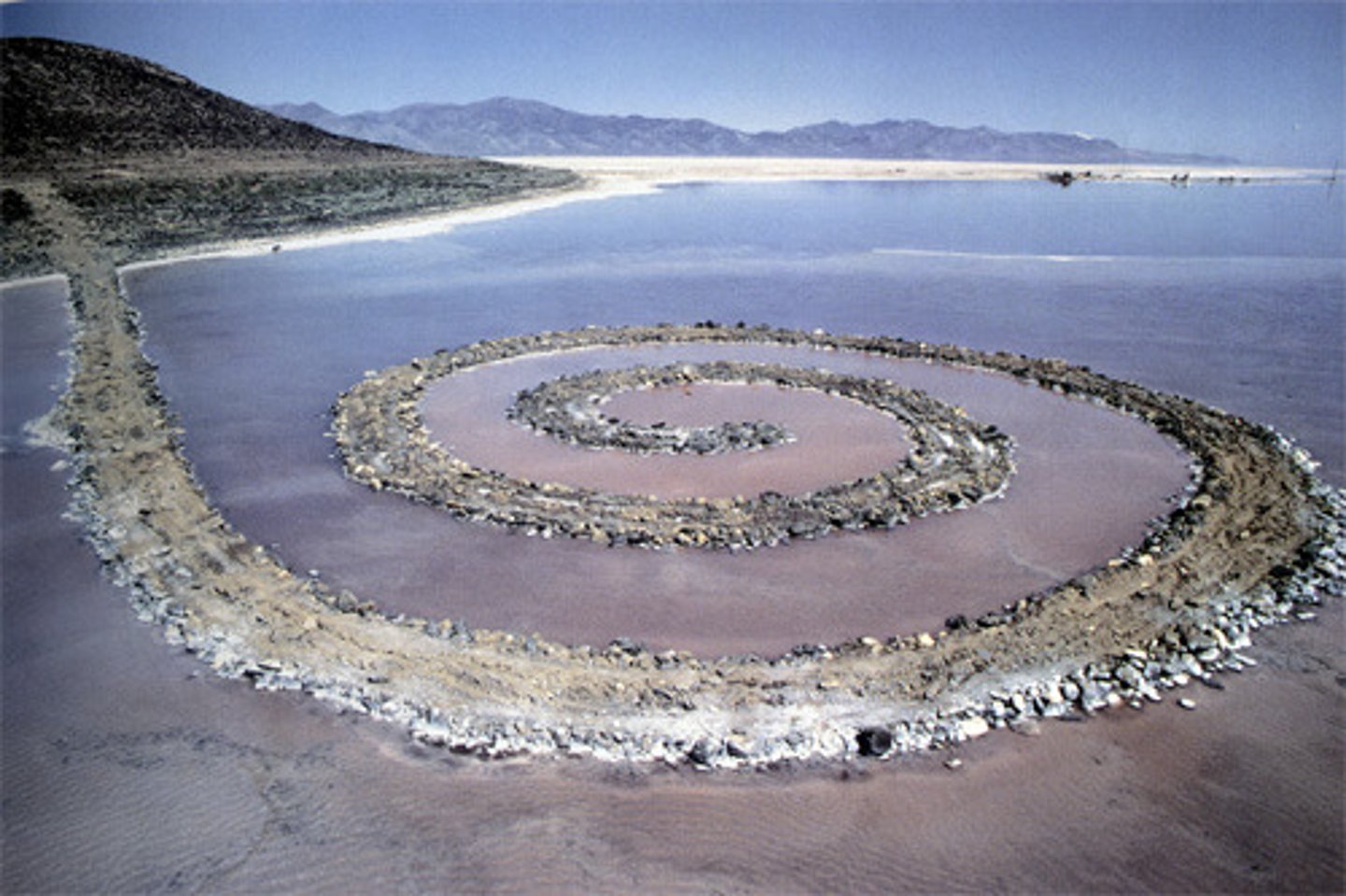AP Art History 250
1/14
There's no tags or description
Looks like no tags are added yet.
Name | Mastery | Learn | Test | Matching | Spaced |
|---|
No study sessions yet.
15 Terms
102. Monticello
Form:
-classical and enlightenment ideals (neoclassical) combining Italian Renaissance and French Classical architecture
-domestic
-symmetrical
-brick, glass, stone, wood
Content:
-expresses American virtue of a Republic through architecture
-two column deep extended portico that support triangular pediment decorated by a semicircular window (doric columns)
-shallow dome
Function:
-plantation house for Jefferson
Context:
-Virginia, USA 1768-1809
-Romanticism/Classicism on the rise
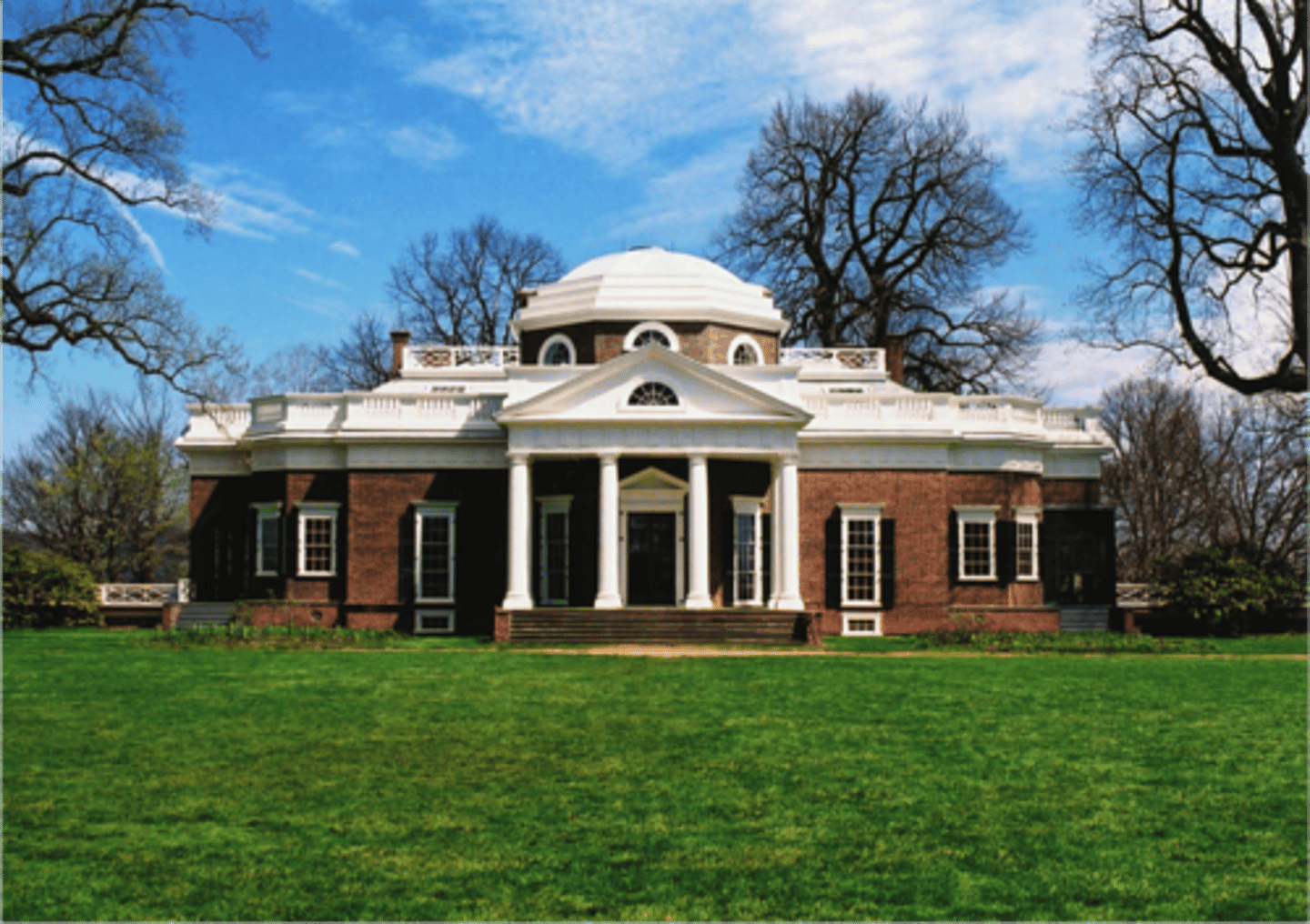
103. The Oath of the Horatii
Form:
-neoclassical (physicality and intense emotions)
-dramatic, rhetorical gestures
-geometric forms with the contrasting curvy formed women
-single light shined upon them at the heightened drama of the scene
Content:
-"what are you willing to die for?"
-3 brothers saluting towards the swords which are held by their father (take oath to defend Rome)
-woman grieving in back ground because they have to deal with consequences of war (either lose husband or their bro)
-sacrifice oneself for good
Function:
-challenge aristocracy
Context:
-Jacques-Louis David 1784 (before the revolution)
-commissioned by King of France
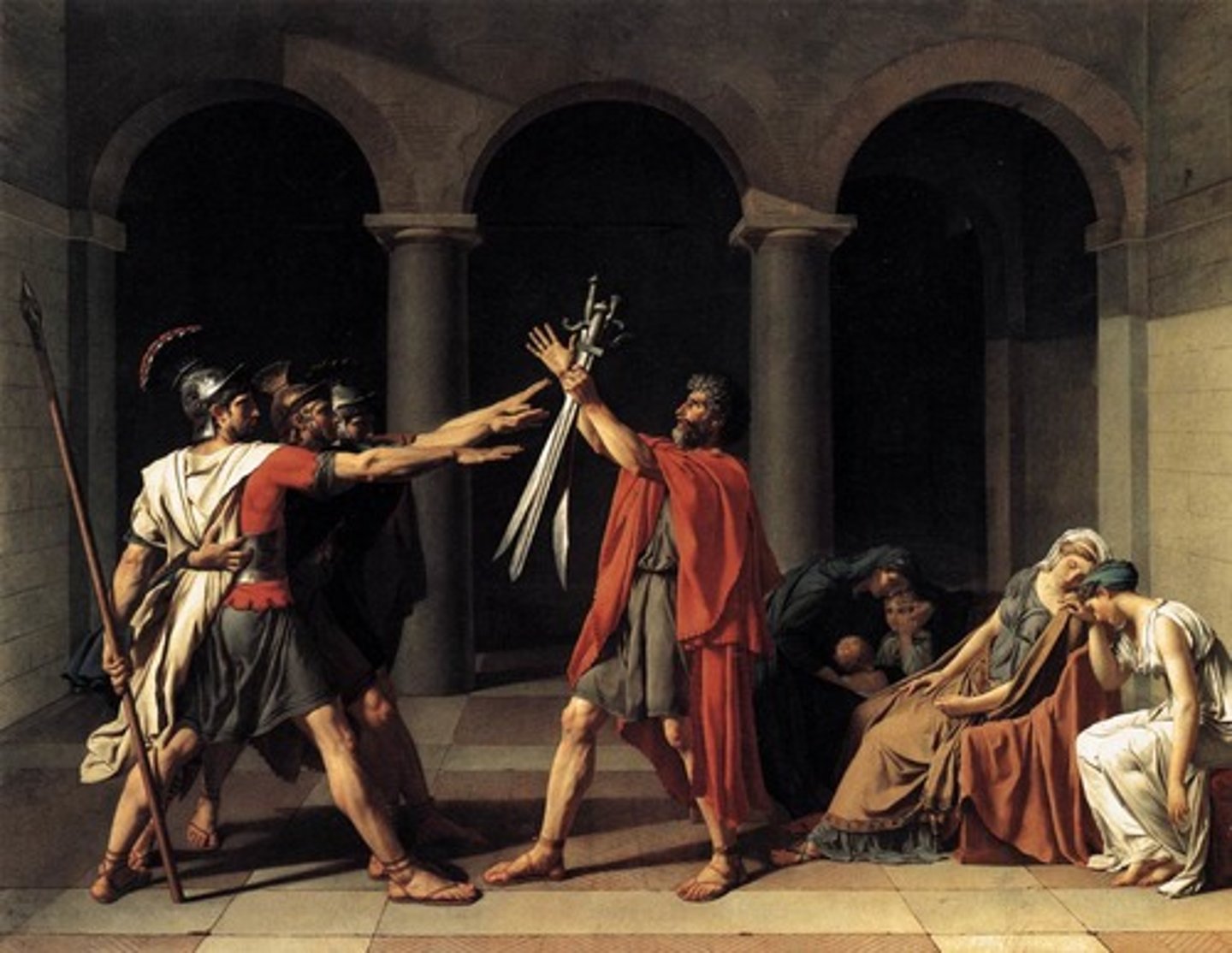
106. Y no hai remedio (And There's Nothing To Be Done)
Form:
-style: romanticism (challenging power and oppression)
-etching, drypoint
Content:
-part of series of 82 called Disasters of War
-what human beings capable of
-government misuse of power on helpless victims
-man is blindfolded with head down tied to wooden pole (christ-like)
-recently deceased corpse with extreme detail of his grotesque face (behind body on pole is a dead body on pole)
Function:
-pictures the atrocities of war
-visual indictment and protest against French occupation of Spain
Context:
-publish 1863, made 1810-1823 CE
-artist: Francisco Goya (trained by Rococo)
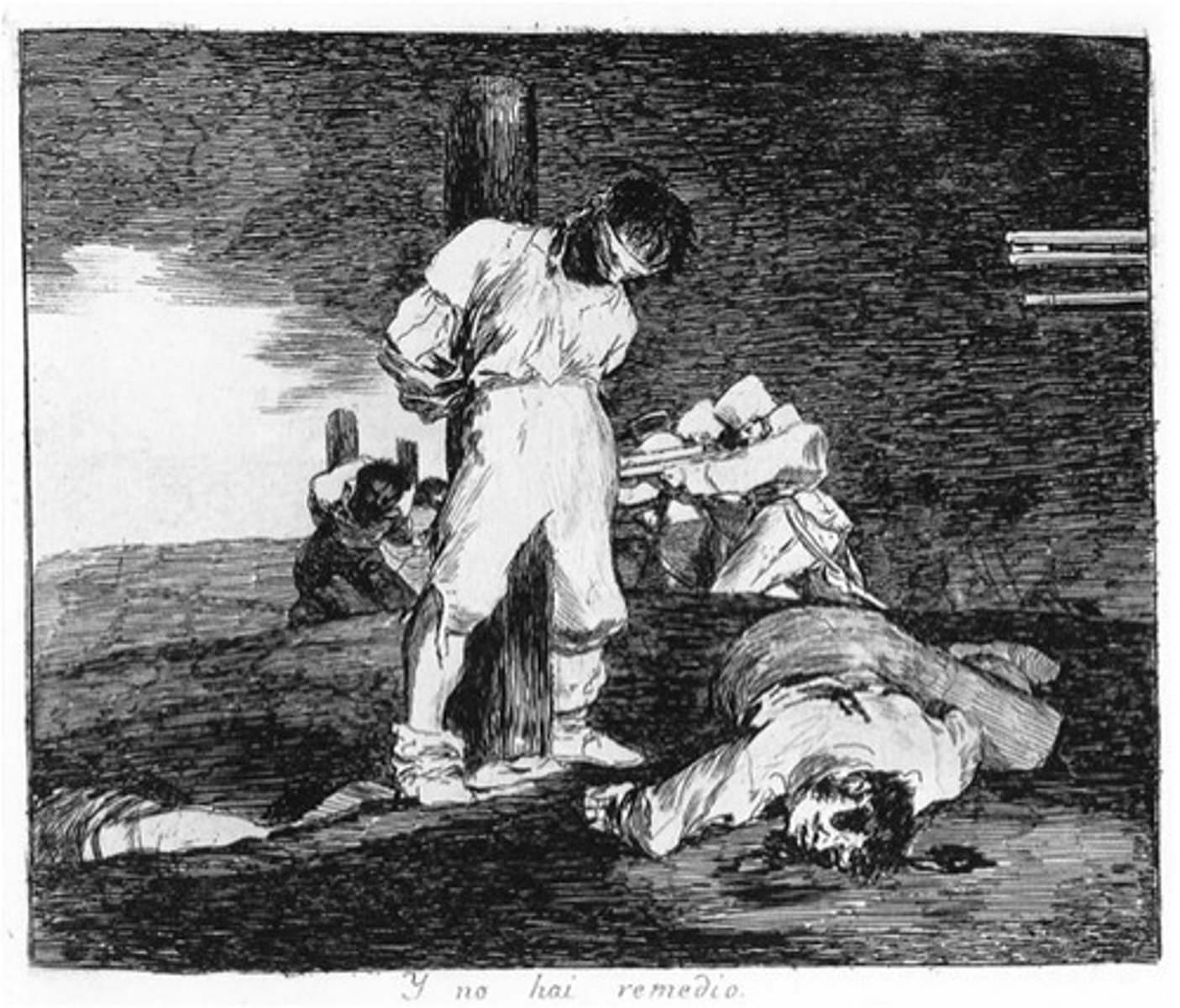
108. Liberty Leading the People
Form:
-romanticism
-seems as though it is overpowered by chaos but filled with subtle order
-oil on canvas
Content:
-people of both the working class and middle class join in the fight against the government
-lady carrying the French flag meant to serve as an allegory, in this case a moral or political idea of Liberty (looking back to make sure people are following, represents an idea)
-background: Notre Dame
Function:
-allow us to believe anyone can be a revolutionary
Context:
-artist: Eugen Delacroix
-1830 CE
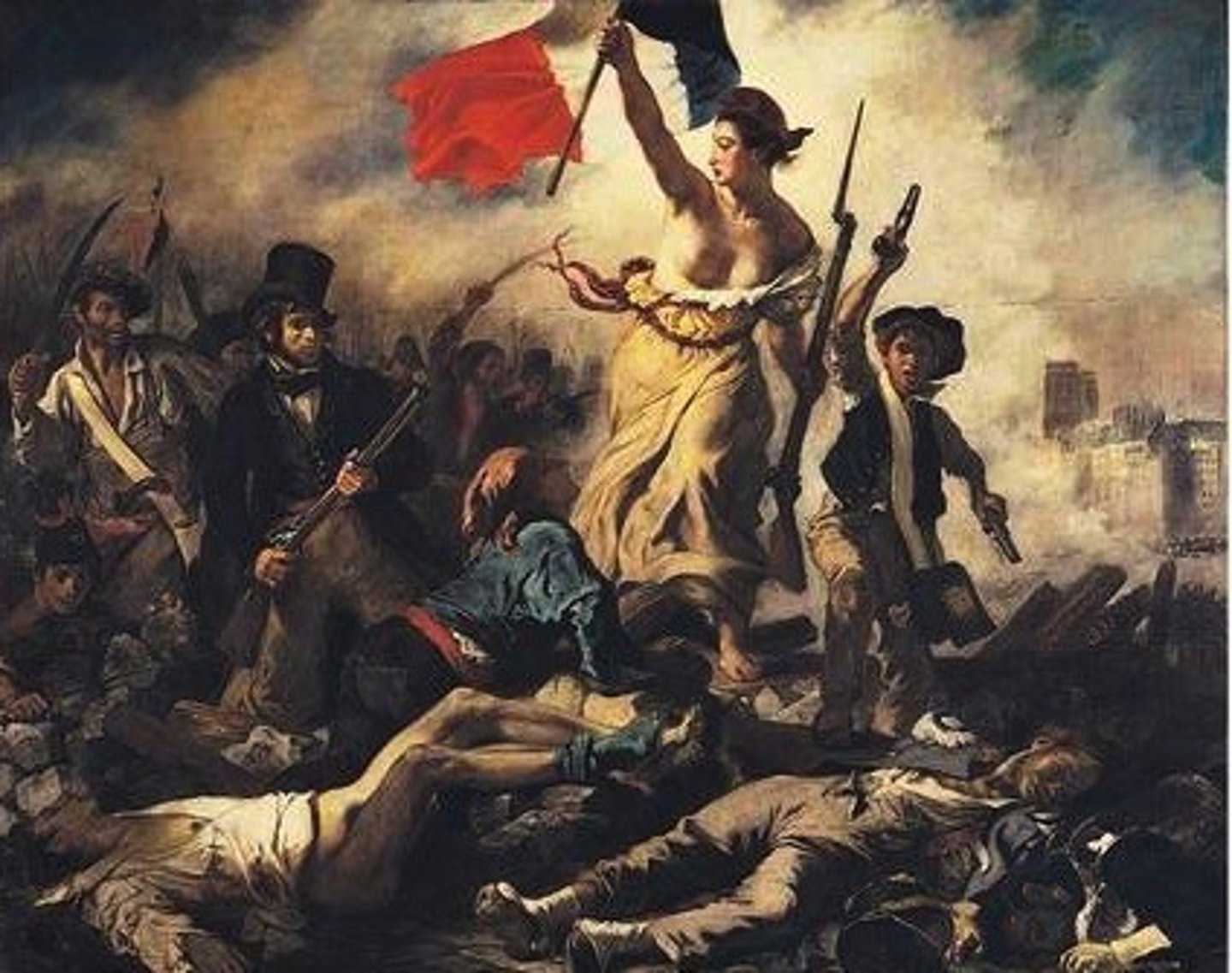
109. The Oxbow
Form:
-romanticism
-Manifest Destiny
-not based of a real place
-oil on canvas
Content:
-reverence for nature
-filled with life
-based on real life area
-divides the painting into two unequal sections
-one shows sublime view of land untouched by man (wild, untamed)
-other side shows land humankind has taken over (overtaken by agriculture)
-self portrait of himself wandering
Function:
-landscape painting
-shows respect for nature
Context:
-Northampton, Massachusetts
-artist: Thomas Cole (leader of Hudson River School)
-1836 CE (19th century)
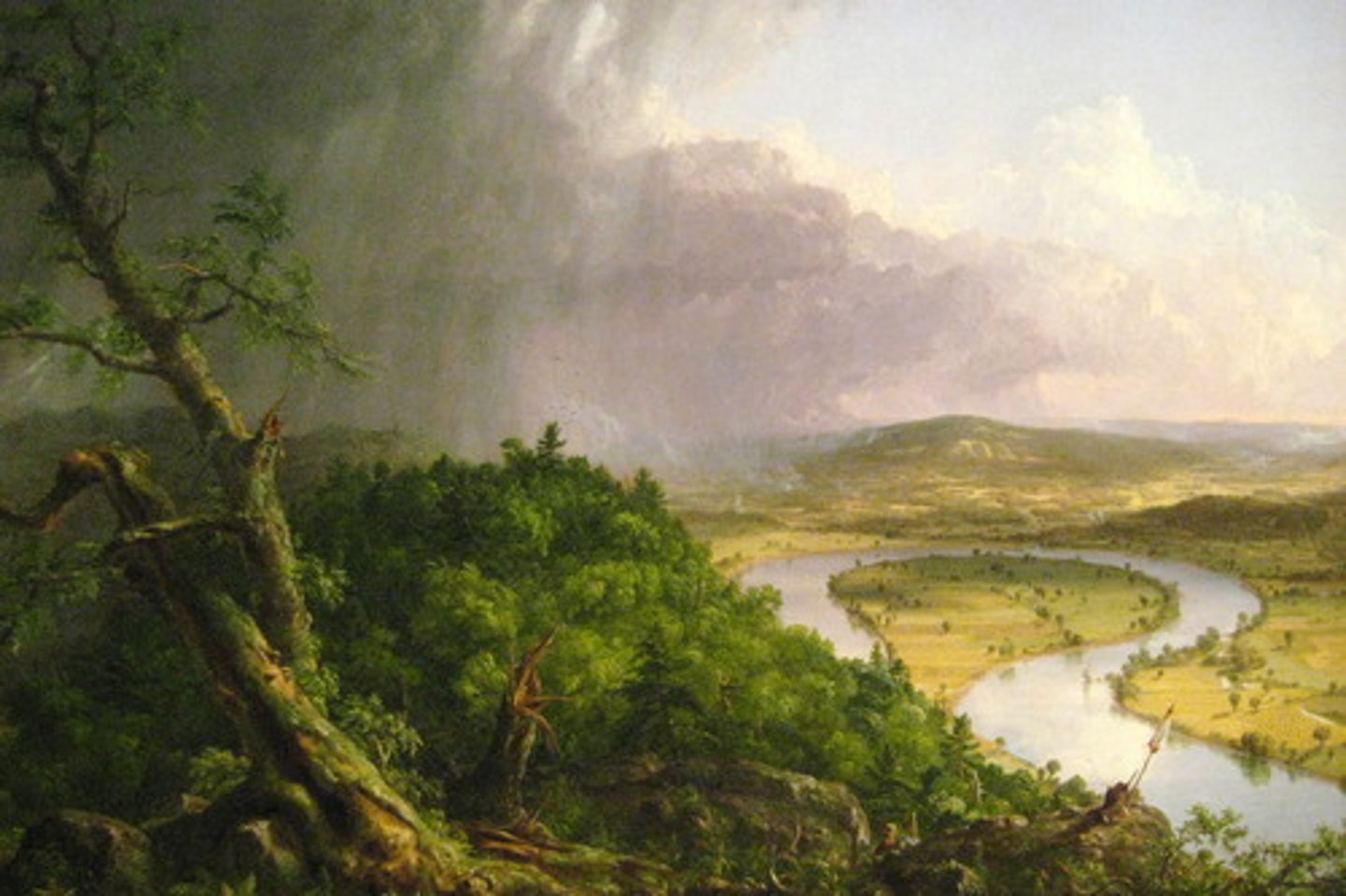
115. Olympia
Form:
-realism (genre scene)
-flatness of body
-rejection of use of space
-angle of body
-heavy paint application
-features not perfect or idealized
-woman makes eye contact with the viewer
Content:
-naked modern woman
-unidealistic features
-prostitute
-cat (wealth)
Function:
-looks like a real woman
-Olympia=prostitute (cortisone)
-genre scene
-sexual interest
-scandy
Context:
-Edowuard Manet 1863
-based on his favorite model
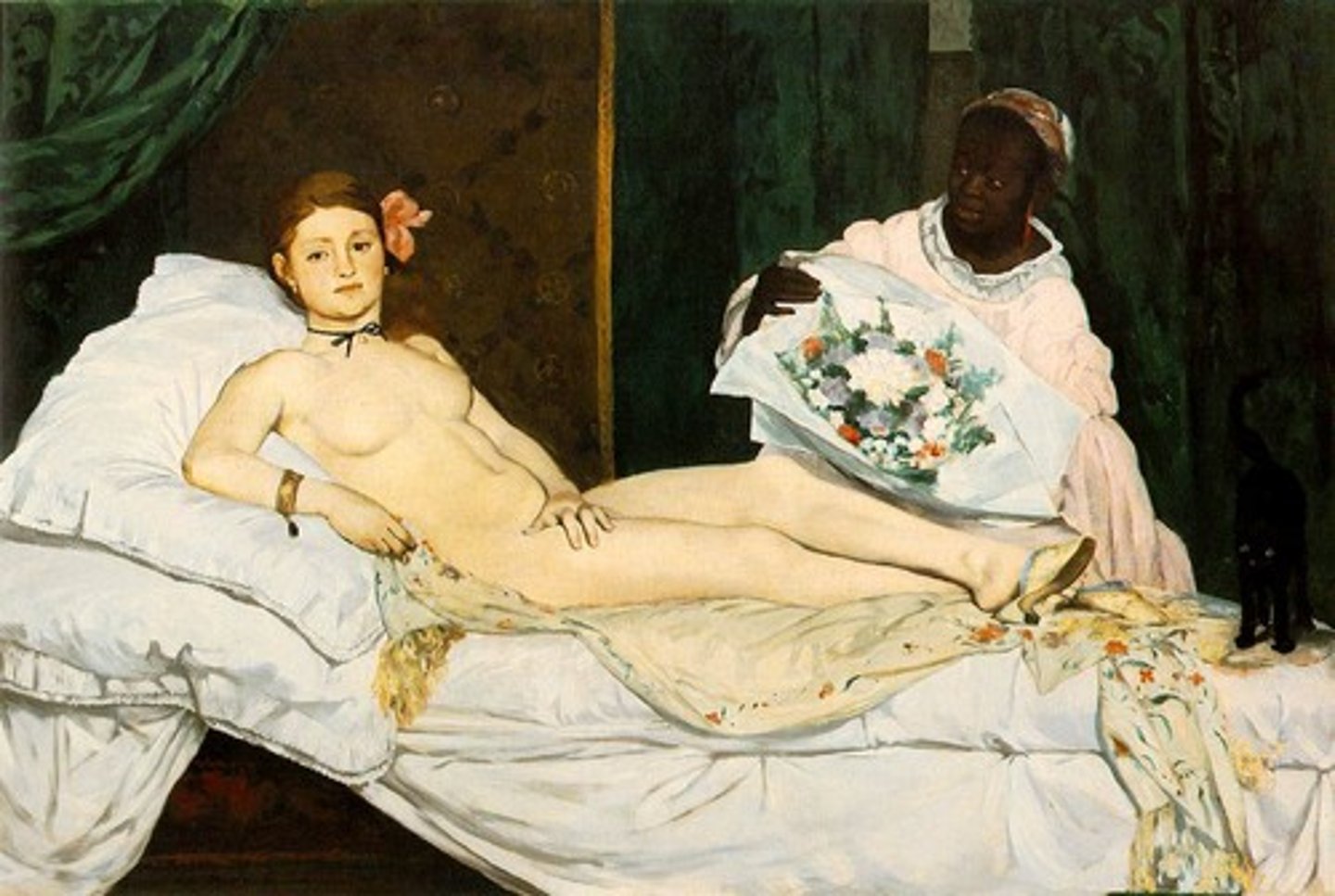
117. Horse in Motion
Form:
-impressionism
-Albumen print
-still photos/filmmaking
-take pics of horse using trip wire on cameras set up that could take pics at 25th of a second
-cut up and put on cylinders
Content:
-chronophotography
-motion
-horse with jockey
Function:
-photography on rise
Context:
-Eadweard Muybridge
1878 CE

125. Mont Sainte-Victoire
Form:
-3 sections
-warm and cool contrast
-multiple vantage points
-shatters one point perspective
-faceted brushwork
-relationship of forms
Content:
-orange: rooftops
-green: trees
-mountain
Function:
-landscape painting
-paints how things relate to eachother
Context:
-Paul Cezanne
-1902-04
-Southern France, post impressionism
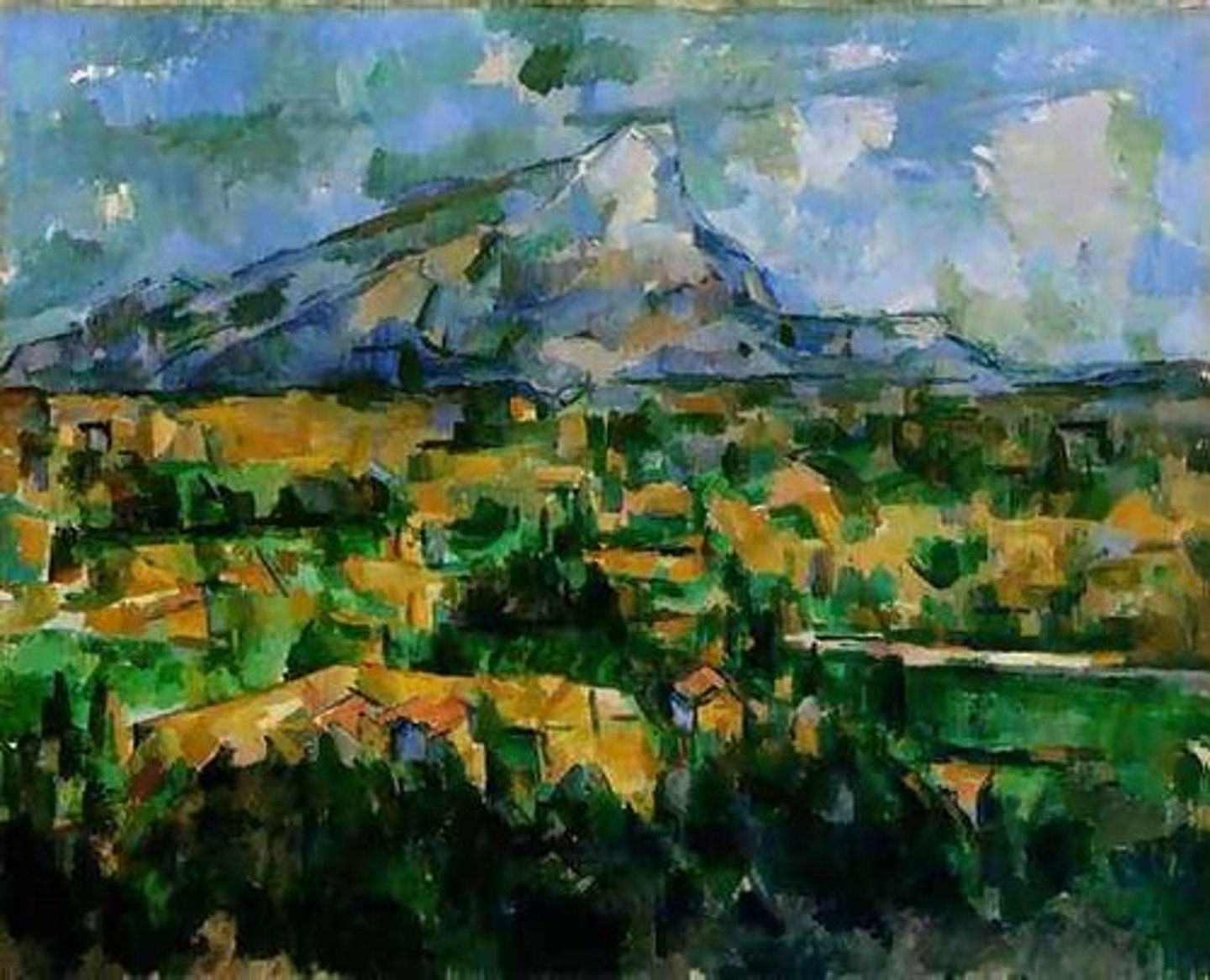
129. The Kiss
Form:
-modern abstraction, little detail
-symmetrical
-stone
Function:
-version of The Kiss by Klimt
Content:
-two bodies becoming one, interlocked with each other
-one thin line separating the two
Context:
-artist: Constantin Brancusi
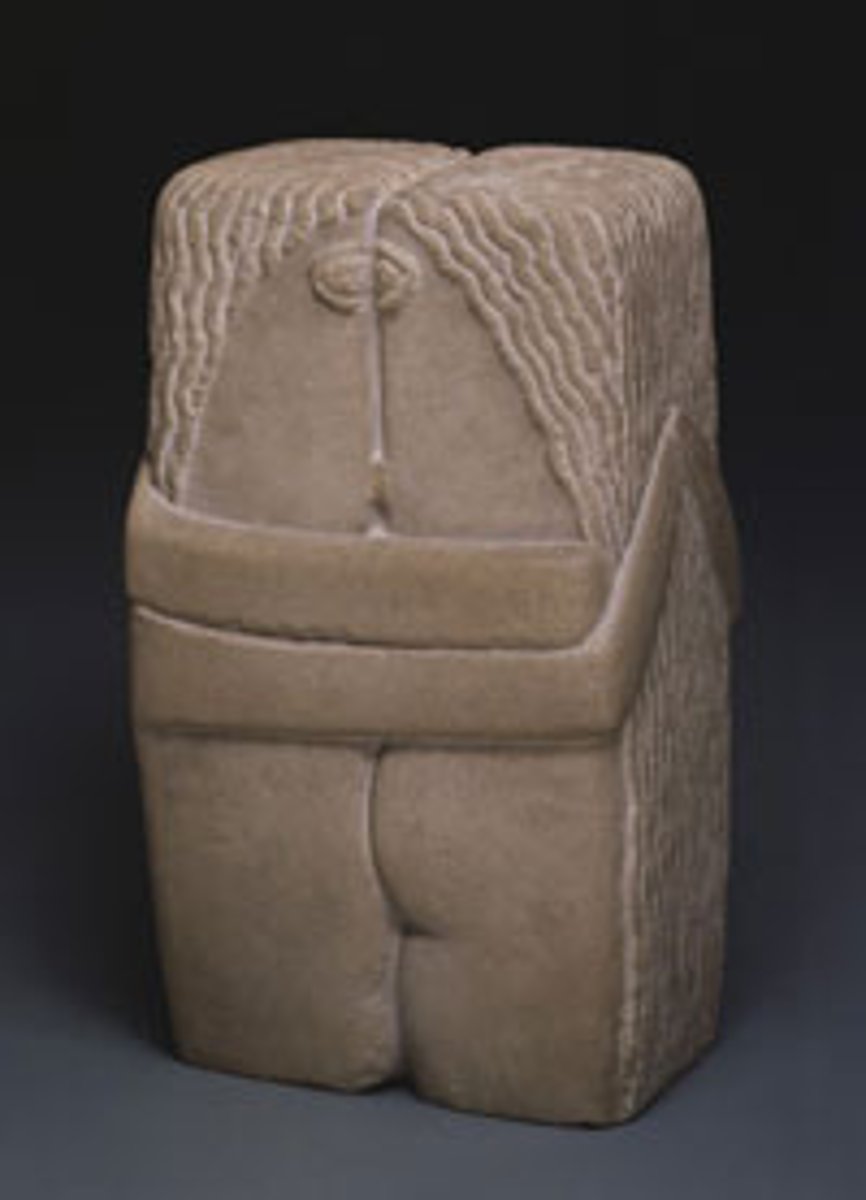
130. The Portugese
Form:
-Analytic Cubism (no color, plain, simplified, cubes)
-text as art with images
-resembling broken glass, fragmented
Content:
-guitar player on a dock?
-stenciled text
Function:
-transitional piece into the new form of Cubism
Context:
-artist: George Braque
-1911 CE

135. Villa Savoye
Form:
-Domino House: concrete slabs
-Reinforced concrete
-Open floor plan
-Natural lighting
-Simplistic white
Content:
-Garage (green) that is very big and can fit limo cars in it for their chauffeurs
-Slender columns
-Non-load bearing walls
-Horizontal windows
-Roof garden
-Spiral staircase or ramps to go up
-Ribbon fenestration (windows wrap around house)
Function:
-Weekend home for the Savoye Family
Context:
-artist: Le Corbusier (architect)
-Poissy-sur-Seine, France
-Designed the furniture too
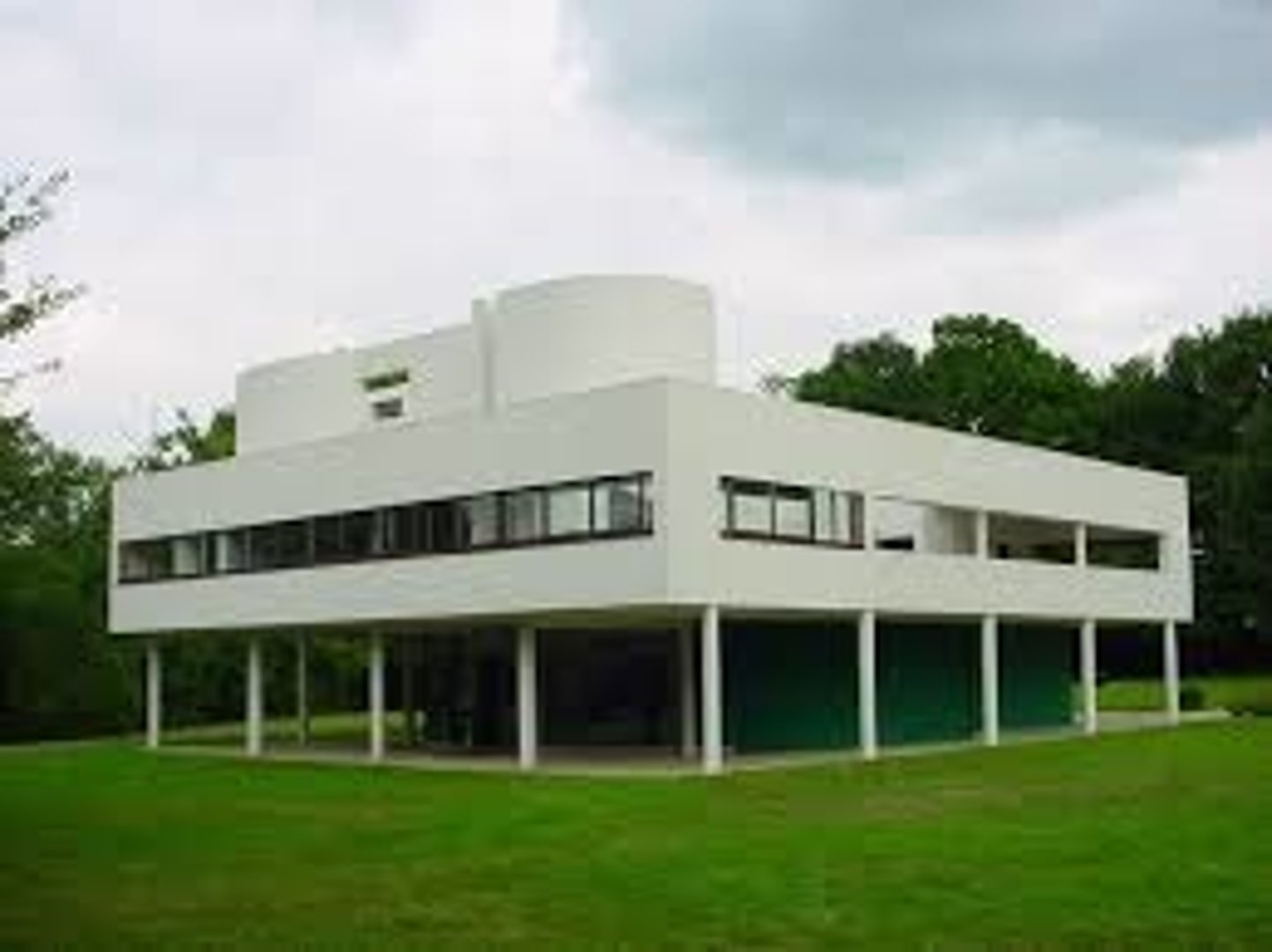
139. Fallingwater
Form:
-Ribbon fenestration
-Organic plan/space
-Horizontality
-Irregularity and complexity of design
Content:
-Hearth in center of house
-Cantilevered porches extending over waterfall
-Living room with glass curtain wall around 3 of the 4 sides
Function:
-Weekend house for the Kauffman family (owned a department store in Pittsburgh)
-Harmony with nature
Context:
-architect: Frank Lloyd Wright, 1936-39 CE140
-Site specific
-Designed furniture as well
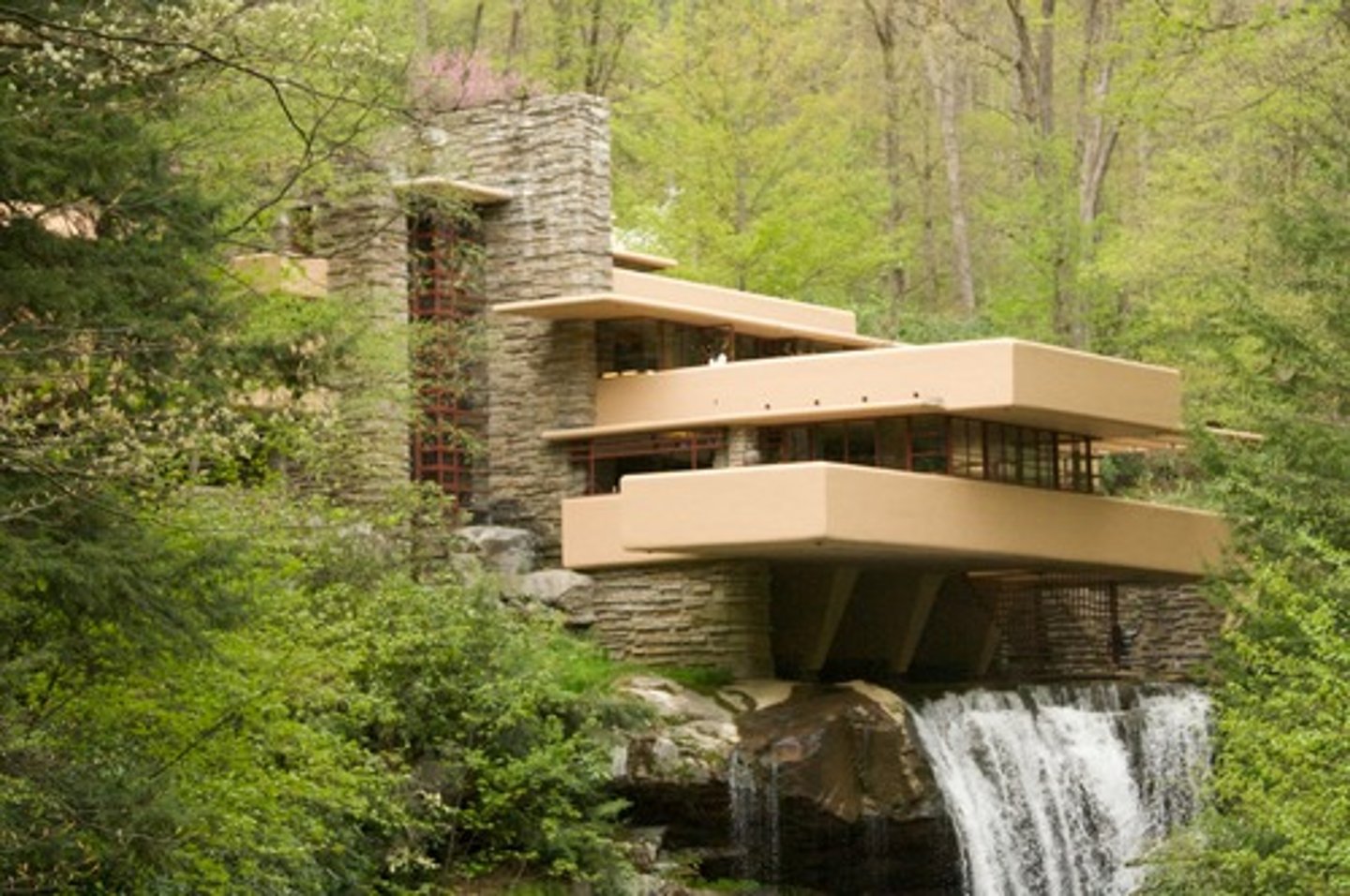
141. Migration of the Negro, panel no. 49
Form:
-Synthetic cubism (flat, angular)
-60 panels in series
-Tempera paint on hardboard
-Unmodulated colors
Content:
-Anonymous faces
-Split down the middle
-Public restaurant in city segregated
Function:
-Historical narrative series that depicts the migration of African Americans from the rural South to the urban North after WWI
-Segregation emphasized by yellow poles that zigzag down the center
Context:
-artist: Jacob Lawrence, 1940-41
-Parents migrated North so he lived during this period of migration
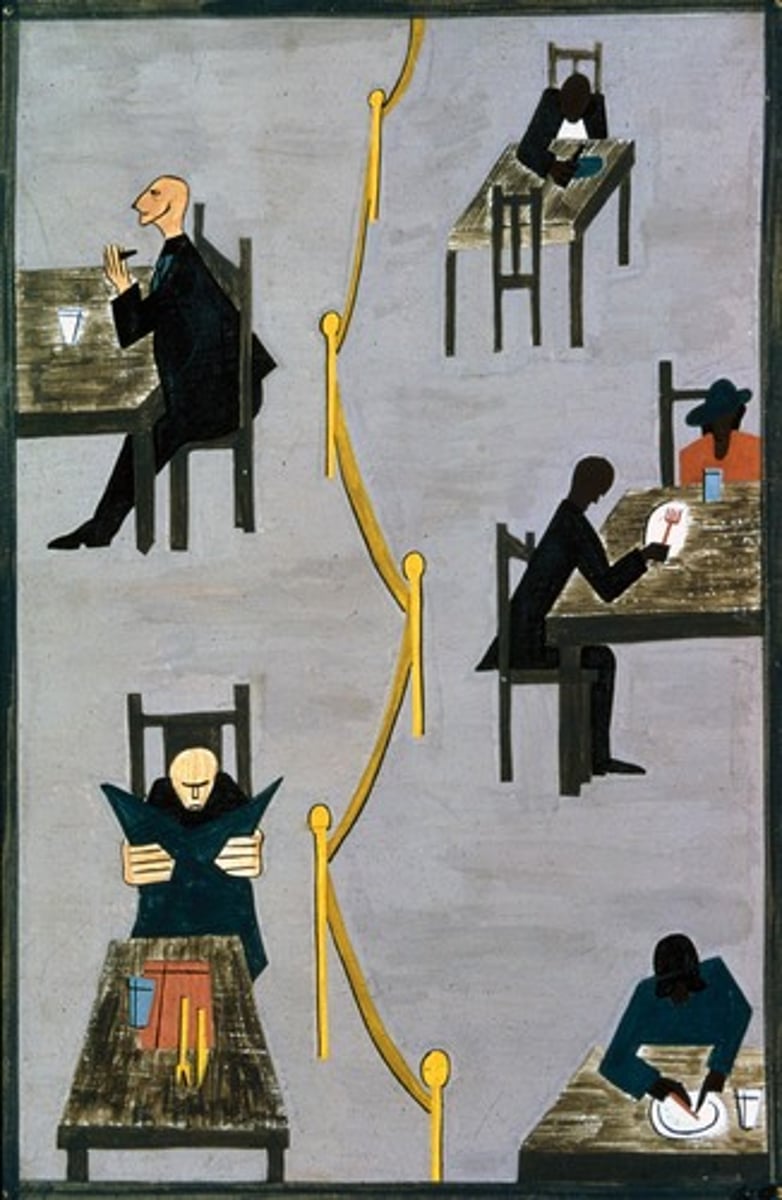
149. The Bay
Form:
-Abstract expressionism
-Use of acrylic (had just been invented)
-Soak-Stain method: pouring wet paint onto a canvas and moving it around
-Paint seeps and flows and interacts with the fiber
Content:
-Prominent blue section shifting from violet to indigo then into navy
-Blurring of the colors, blues blend together
Function;
-Color as the subject of the painting
-Subject could also be a landform of some sort?
Context:
-Helen Frankenthaler, 1963 CE
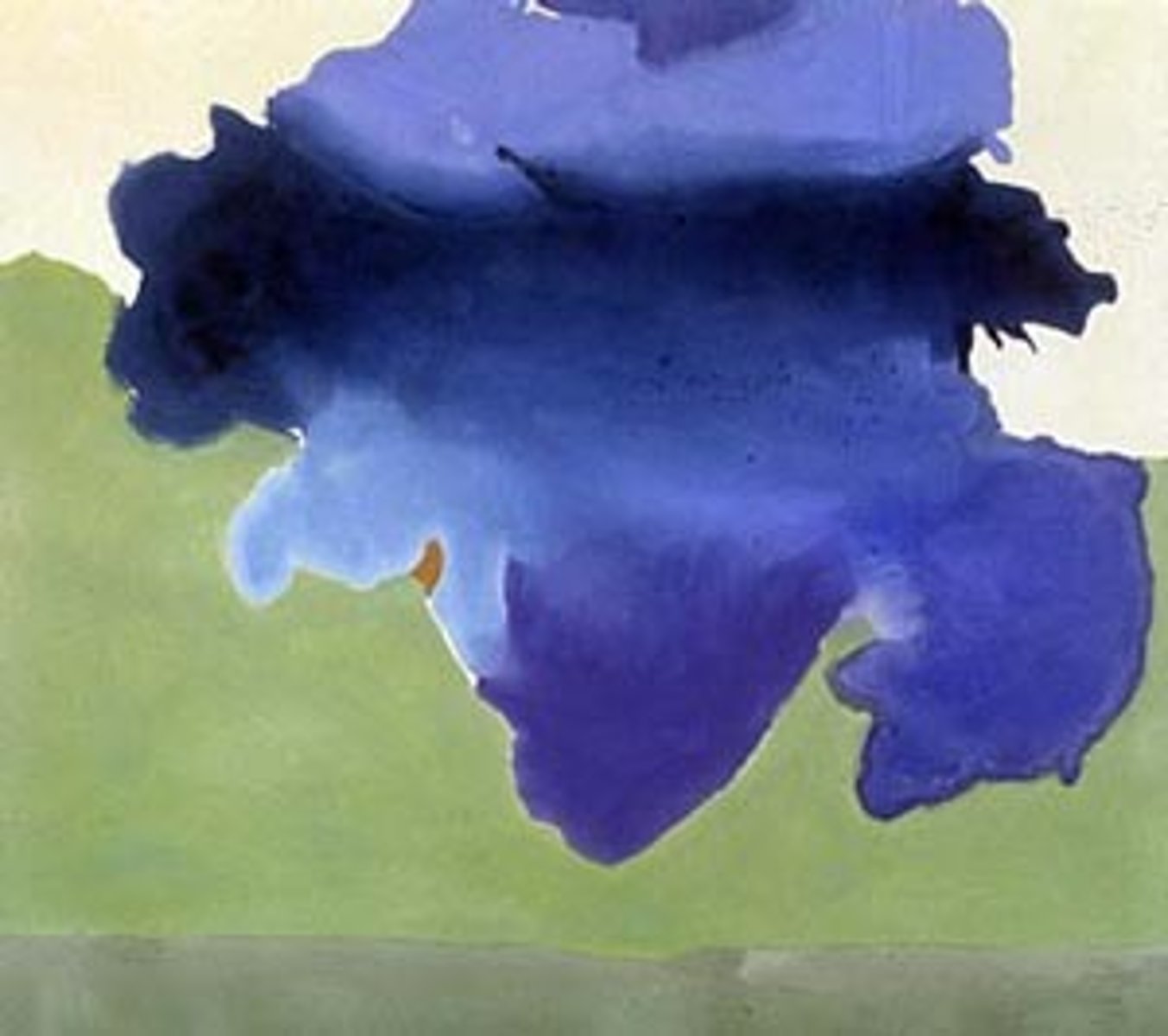
151. Spiral Jetty
Form:
- earthwork: mud, salt crystals, rocks, water coil
- arranged in counterclockwise motion
Content:
- a pathway that goes out in the Great Salt Lake
Function:
- this work of art is ever-changing because of the water levels
- supposed to be a pilgrimage to get there
Context:
- Great Salt Lake, Utah
-site-specific
- made by Robert Smithson in 1970
